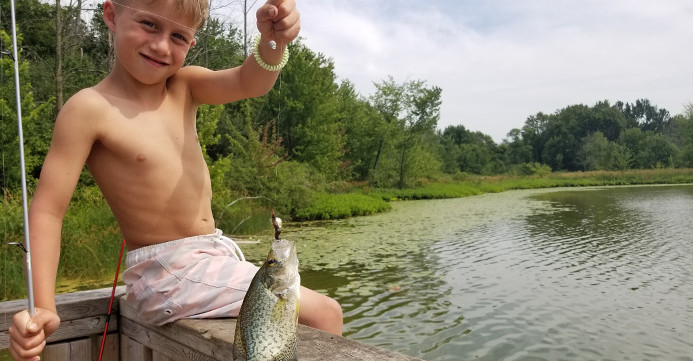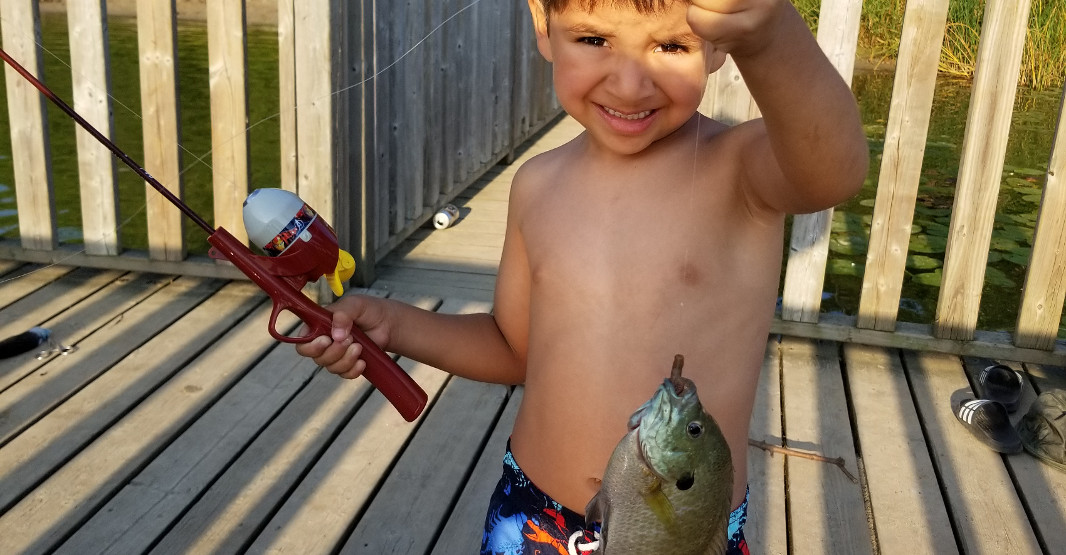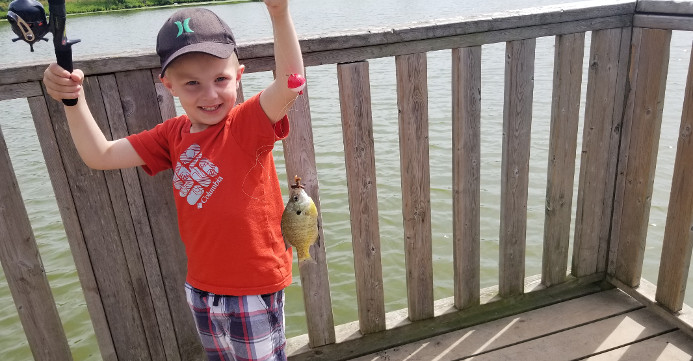Essential fishing gear to get started
ROD AND REEL: Spincasting reels are the easiest for beginners to cast and can handle fish up to 20 pounds. Longer rods allow for longer casts and play fish better. 5-foot-6-inch rods are good for smaller guys, while a 6-foot-6-inch rod is a great all-around size for teenagers.
FISHING LINE: Monofilament is very durable and easier to handle than other line types. Try 6- or 8-pound test for panfish, crappie or trout. For bigger fish like bass, catfish and walleye, 10- to 12-pound test works better. (“Test” is a measure of how strong a line is.)
HOOKS: When using live bait, smaller hooks are easier to get started in a fish’s mouth than bigger ones. Try size 6 hooks for panfish and crappie. Size 1 hooks work well for bass or catfish. Circle hooks are the ideal hooks for beginners. They won’t end up in a fish’s stomach; instead, they stick in the corner of the fish’s mouth, making for an easy hook removal. Plus, you don’t have to set the hook, just start reeling and the fish hooks itself.
SINKERS: Small crimp-on split-shot sinkers are very versatile and easy to add or remove.
NEEDLE-NOSE PLIERS for removing hooks.
SCISSORS OR CLIPPERS to cut line.
BAITS: Artificial lures or live.
TACKLE BOX: If you’re bank fishing, a smaller tackle box is better than hauling around a big one. A couple of small tackle boxes that fit into a backpack are ideal for the shore angler.
BOBBERS: The biggest mistake novice fishermen make is using too large of a bobber. The smaller the bobber, the better you can detect strikes. Use one that will just float your bait, pulling down easily when a fish nibbles.
SUNSCREEN: Water reflects light, so burns happen even faster on the water.
SCALES OR FISHING RULER for measuring your catch.
CAMERA: Put your camera or camera phone in a resealable plastic bag, and it will be safe in case water gets splashed on it.





